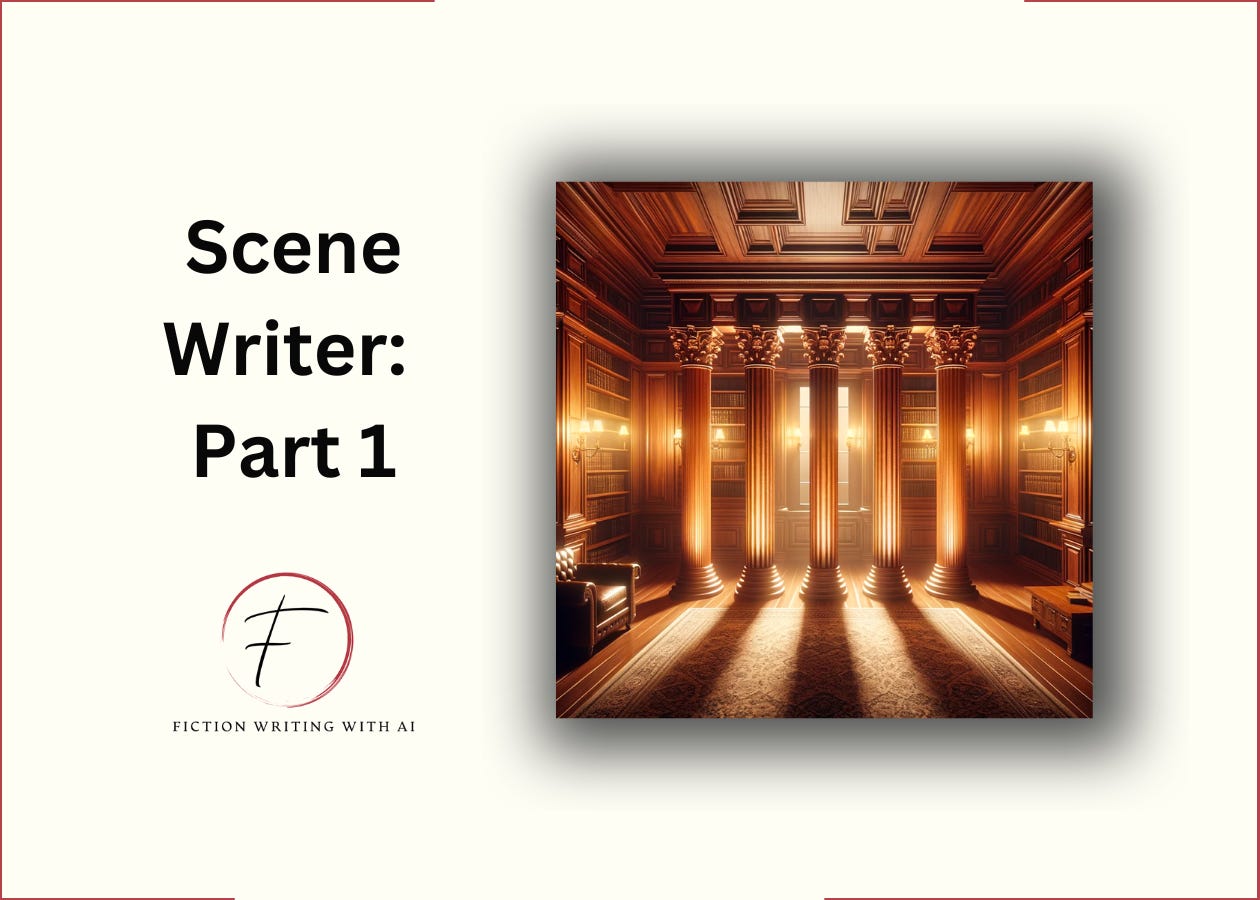Hey there!
Whether you're writing your first novel or looking to take your skills to the next level, understanding scene structure is crucial for crafting a compelling story that flows from beginning to end.
Scenes are the heartbeat of your novel. Sometimes they beat fast and sometimes they beat slow, but they always follow the same basic pattern: Action & Reaction.
The Action in a scene is where you find conflict. The Reaction is where the reader gets a break in the action. Like a sigh of relief. This is where the reader can catch their breath and reflect on everything that just happened, all while the tension builds.
Today, I’m going to break down the 3 essential elements of action in a scene. And then I’ll give you a ChatGPT prompt to get you going with the writing.
Let’s dive in.
3 Fundamental Pillars Of Action
Aaron Sorkin, writer and creator of the West Wing said:
“I worship at the altar of intention and obstacle. Somebody wants something, and something is standing in their way of getting it. They want the money; they want the girl; they want to get to Philadelphia. Then the obstacle to that has to be formidable..”
Goal and obstacle.
This is what creates the action in your scene.
First up, the goal.
1. The Goal
The first pillar is the goal.
The foundation of any strong scene is a clear goal for your main character. Their desire drives the action forward and gives the scene purpose. Be sure to establish what your character wants right away so readers understand what's at stake.
The goal should:
Connect to the overall story goal in some way, moving them closer to fulfilling their broader ambition
Be specific enough to create forward momentum
Raise questions and heighten tension - will they achieve their aim or not?
For example, in Life of Pi, Pi's goal in an early scene is to feed the tiger Richard Parker to keep him alive. This connects to his wider goal of surviving on the lifeboat.
Without a goal, the scene is directionless. Define it early and make it matter.
2. The Obstacle
Once you have a goal in place, you need conflict to prevent your character from easily obtaining what they want. This complication is what makes a story unfold rather than end abruptly.
Effective conflict:
Arises organically from the established goal
Forces your character to struggle
Makes success uncertain
Intensifies drama and tension
In Life of Pi, the conflict arises when Pi struggles to overcome his paralyzing fear to get close enough to Richard Parker to feed him. Pi is trembling at the back of the lifeboat, clutching the bucket of raw fish. But Richard Parker is hungrily pacing up and down the lifeboat, blocking Pi's access to his feeding spot. Pi knows he must suppress his terror long enough to scramble past the tiger to feed him. But each time he tries, Richard Parker roars ferociously, causing Pi to scamper back in fear.
Whatever the scene **conflict, it must endanger the goal.
3. The Unfavorable Outcome
Finally, the conflict should resolve, but not in your protagonist's favor. Each scene is a setup for the next, so closing on a disaster propels the story forward. The outcome should:
Directly tie back to the central conflict
Leave your protagonist in a pickle
Propel the story into the next scene
In our scene from the Life of Pi, it ultimately ends in disaster when Pi does not succeed in overcoming his fear enough to get close and feed the starving Richard Parker. The tiger menacingly stares Pi down with a guttural growl as Pi cowers, fish bucket untouched. This outcome propels the story forward as Pi must now face the consequences of failing to feed the tiger and figure out another strategy to keep them both alive.
It doesn't have to be earth-shattering, but should push the character off-balance and escalate the stakes putting the character’s back against the wall.
Now, let’s see if we can ChatGPT to help.
Train ChatGPT To Write Your Scene
Let’s walk through the steps you can follow to use to AI to construct well-crafted scene.
Step 1: Gather The Scene Inputs
Start by gathering your scene details:
Keep reading with a 7-day free trial
Subscribe to Fiction Writing With AI to keep reading this post and get 7 days of free access to the full post archives.




